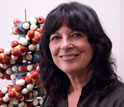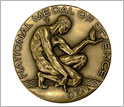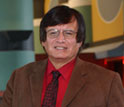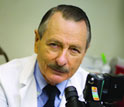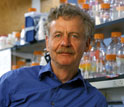News Release 11-219
President Obama Honors Nation's Top Scientists and Innovators
Federally-funded researchers across many disciplines figure prominently among medal laureates and mark several "firsts"
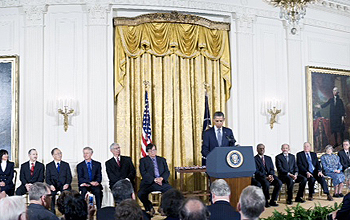
President Obama presented the 2010 National Medals of Science at the White House in October.
October 14, 2011
This material is available primarily for archival purposes. Telephone numbers or other contact information may be out of date; please see current contact information at media contacts.
Last month, President Obama designated seven eminent researchers for the National Medal of Science (NMS) and five inventors for the National Medal of Technology and Innovation (NMTI), the highest honors bestowed by the United States government on scientists, engineers and inventors. The recipients will receive their awards at a White House ceremony next week.
"Each of these extraordinary scientists, engineers and inventors is guided by a passion for innovation, a fearlessness even as they explore the very frontiers of human knowledge and a desire to make the world a better place," Obama said when announcing the awards last month. "Their ingenuity inspires us all to reach higher and try harder, no matter how difficult the challenges we face."
The National Science Foundation (NSF) funded research by six of the seven National Medal of Science awardees at some point in their careers and one of the five Medal of Technology and Innovation laureates. Of these, three of the six NMS awardees and the sole NMTI awardee have active NSF grants. Among the NMS laureates, all except the mathematicians are active National Institute of Health grantees, as well.
"This is an exceptional group of individuals that were funded by the federal government early in their careers and continue to be active and productive researchers today," said NSF Director Subra Suresh. "For instance, among the laureates is a researcher who was recognized as both an NSF Presidential Young Investigator in 1984 and an Alan T. Waterman awardee in 1985, Jacqueline Barton. We at NSF are very proud to have supported her research and all of the NSF-funded awardees' tremendous achievements. We look forward to their future breakthroughs, as well as the contributions of their students and protégées."
Further, distinctive "firsts" punctuate this prestigious group of laureates. Barton and her husband, Peter B. Dervan, are the first husband and wife team to have been honored by the president with a National Medal of Science. A chemist also at CalTech, Dervan received the award in 2007.
Ralph Brinster is the first known veterinarian to win the NMS.
While not a "first," also among the group is a former member of the National Science Board, Richard Tapia, the second U.S.-born Latino to receive the Medal, and Barton, the 40th female NMS laureate in the award's over half-century history.
The National Medal of Science was created by statute in 1959 and is administered for the White House by the NSF. Awarded annually, the medal recognizes individuals who have made outstanding contributions to science and engineering. Nominees are selected by a committee of presidential appointees based on their extraordinary knowledge in and contributions to chemistry, engineering, computing, mathematics, and the biological, behavioral/social and physical sciences.
This year's recipients are listed below. Those with an asterisk are NSF-funded.
NATIONAL MEDAL OF SCIENCE
*Jacqueline K. Barton, California Institute of Technology
For discovery of a new property of the DNA helix, long-range electron transfer, and for showing that electron transfer depends upon stacking of the base pairs and DNA dynamics. Her experiments reveal a strategy for how DNA repair proteins locate DNA lesions and demonstrate a biological role for DNA-mediated charge transfer.
Barton's list of NSF funded awards (seven) and honors is huge, starting with a NSF Predoctoral Fellowship in 1975. Nearly a decade later, she won NSF's 1984 Presidential Young Investigator Award and the 1985 Alan T. Waterman Award, NSF's highest honor to early career scientists and engineers.
Barton has founded two subfields in chemistry that have continuing extraordinary impact: three-dimensional recognition of specific sequences of DNA by inorganic complexes, and the study of charge transfer through DNA. Both of these areas sparked enormous worldwide interest in the physical properties of double-stranded DNA (as opposed to its genetic role) that has stimulated experiments and theory in disciplines beyond chemistry, such as materials science and physics.
*Ralph L. Brinster, University of Pennsylvania
For his fundamental contributions to the development and use of transgenic mice. His research has provided experimental foundations and inspiration for progress in germline genetic modification in a range of species, which has generated a revolution in biology, medicine and agriculture.
Brinster received NSF funding in 1979 and 1981 from its Biological Sciences Division of Integrative Organismal System. He is the only known veterinarian to win this award.
*Shu Chien, University of California, San Diego
For pioneering work in cardiovascular physiology and bioengineering, which has had tremendous impact in the fields of microcirculation, blood rheology and mechanotransduction in human health and disease.
Chien was first funded by NSF in 1988 by its Office of International Science and Engineering. Combining engineering analysis with biomedical experimentation, his research transcends the biological hierarchy from organ-system to tissue-cell and molecular-genetic levels.
Rudolf Jaenisch, Whitehead Institute for Biomedical Research and Massachusetts Institute of Technology
For improving our understanding of epigenetic regulation of gene expression: the biological mechanisms that affect how genetic information is variably expressed. His work has led to major advances in our understanding of mammalian cloning and embryonic stem cells.
*Peter J. Stang, University of Utah
For his creative contributions to the development of organic supramolecular chemistry and for his outstanding and unique record of public service.
NSF has supported Stang's work for three decades with 13 awards. He has an active grant today with which he is working with Li-Jun Wan of the Chinese Academy of Sciences in Beijing, China, with the potential for large impact on nanotechnology with the power to revolutionize manufacturing and consumer goods in the 21st century.
*Richard A. Tapia, Rice University
For his pioneering and fundamental contributions in optimization theory and numerical analysis and for his dedication and sustained efforts in fostering diversity and excellence in mathematics and science education.
Tapia is closely connected with NSF. In addition to receiving a dozen awards from NSF in 30 years, he was appointed to serve on the National Science Board by President Clinton, which he did from 1996 to 2002. Often listed among the top Hispanics in technology and business, among the areas impacted by his work on the applications of optimization include mapping of environmental spatial data and the functioning of medical devices that produce X-rays and computed tomography or CT images.
*Srinivasa S. R. Varadhan, New York University
For his work in probability theory, especially his work on large deviations from expected random behavior, which has revolutionized this field of study during the second half of the twentieth century and become a cornerstone of both pure and applied probability. The mathematical insights he developed have been applied in diverse fields including quantum field theory, population dynamics, finance, econometrics and traffic engineering.
With 14 in nearly 30 years, Varadhan has received more NSF funding awards than any other medalist this year. He is considered a direct intellectual heir of Norbert Wiener and A.M. Kolmogorov, mathematical heroes of modern probability theory (whose Wiener-Khinchin theorem, first published by Wiener in 1930, independently later published by Khinchin 1934) was anticipated by Albert Einstein in a two-page memo in 1914.
National Medal of Technology and Innovation
The National Medal of Technology and Innovation was created by statute in 1980 and is administered for the White House by the U.S. Department of Commerce's Patent and Trademark Office. The award recognizes those who have made lasting contributions to America's competitiveness and quality of life and helped strengthen the nation's technological workforce. Nominees are selected by a distinguished independent committee representing the private and public sectors.
For 2010, there are five National Medal of Technology and Innovation laureates, one of whom, Rakesh Agrawal, is NSF funded:
*Rakesh Agrawal - Purdue University
For an extraordinary record of innovations in improving the energy efficiency and reducing the cost of gas liquefaction and separation. These innovations have had significant positive impacts on electronic device manufacturing, liquefied gas production, and the supply of industrial gases for diverse industries.
Agrawal, funded during the last two decades by NSF's Division of Emerging Frontiers in Research and Innovation and its Chemical, Bioengineering, Environmental, and Transport Systems, takes a multidisciplinary approach to advance energy technologies.
The full list of National Medal of Technology and Innovation awardees is available online.
-NSF-
-
Jacqueline Barton was an NSF Presidential Young Investigator and Waterman awardee in the mid-1980s.
Credit and Larger Version -
National Medal of Science
Credit and Larger Version -
2010 National Medal of Science Laureate Richard Tapia was a member of the National Science Board.
Credit and Larger Version -
Ralph Brinster is the first known veterinarian to win a National Medal of Science.
Credit and Larger Version -
2010 National Medal of Science Laureate Rudolf Jaenisch, MD.
Credit and Larger Version
Media Contacts
Lisa-Joy Zgorski, NSF, (703) 292-8311, email: lisajoy@nsf.gov
Program Contacts
Mayra N. Montrose, NSF, (703) 292-4757, email: mmontros@nsf.gov
Related Websites
NSF National Medals of Science Fact Sheet: http://www.nsf.gov/od/nms/medal.jsp
President Obama Honors Top Scientists and Innovators: http://www.whitehouse.gov/the-press-office/2011/09/27/president-obama-honors-nation-s-top-scientists-and-innovators
The U.S. National Science Foundation propels the nation forward by advancing fundamental research in all fields of science and engineering. NSF supports research and people by providing facilities, instruments and funding to support their ingenuity and sustain the U.S. as a global leader in research and innovation. With a fiscal year 2023 budget of $9.5 billion, NSF funds reach all 50 states through grants to nearly 2,000 colleges, universities and institutions. Each year, NSF receives more than 40,000 competitive proposals and makes about 11,000 new awards. Those awards include support for cooperative research with industry, Arctic and Antarctic research and operations, and U.S. participation in international scientific efforts.
Connect with us online
NSF website: nsf.gov
NSF News: nsf.gov/news
For News Media: nsf.gov/news/newsroom
Statistics: nsf.gov/statistics/
Awards database: nsf.gov/awardsearch/
Follow us on social
Twitter: twitter.com/NSF
Facebook: facebook.com/US.NSF
Instagram: instagram.com/nsfgov



